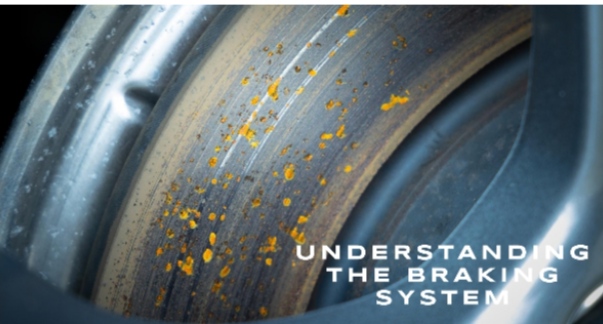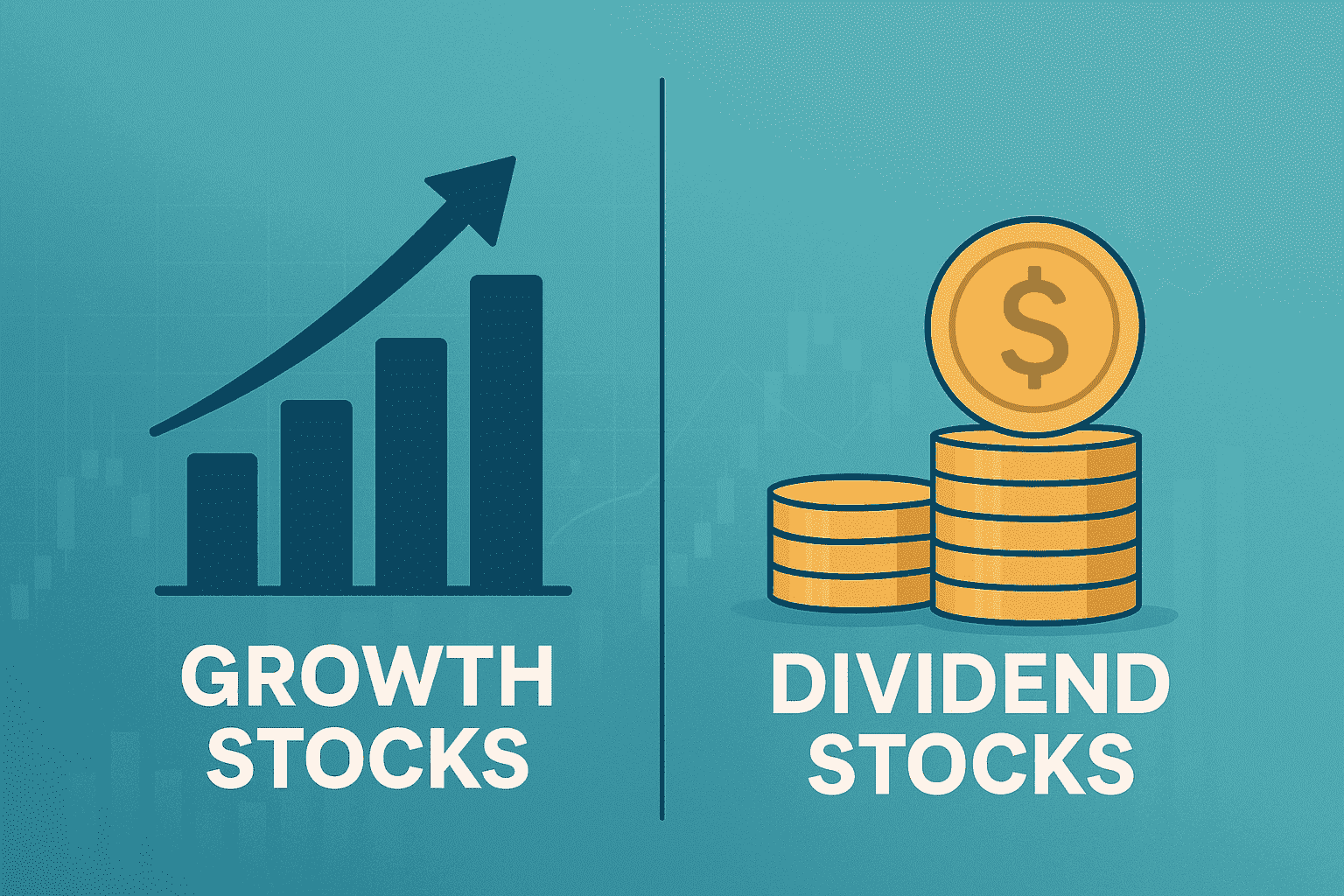Business
Understanding the Braking System From Drums to Discs:

The braking system of a vehicle is one of its most critical components, responsible for ensuring the safety of both the driver and passengers. Over the years, this system has undergone significant evolution, transitioning from simple mechanical designs to advanced, highly efficient systems. Understanding the journey from drum brakes to disc brakes provides valuable insight into how modern braking systems have become more effective and reliable.
Early braking systems were rudimentary, often failing to provide the necessary stopping power required for increasing vehicle speeds and weights. Drum brakes, which emerged in the early 20th century, were among the first major advancements in automotive braking technology. However, as vehicles continued to evolve, the limitations of drum brakes became apparent, leading to the development of disc brakes. This evolution has been driven by the need for greater safety, performance, and reliability in braking systems.
The Rise of Drum Brakes:
Drum brakes were introduced as an improvement over the initial braking systems, which were often unreliable and difficult to maintain. The drum brake system consists of a rotating drum attached to the wheel, with brake shoes inside that press outward against the drum to create friction and slow the vehicle. This design was revolutionary at the time, providing better braking power and durability compared to earlier mechanisms.
Despite their advantages, drum brakes have several inherent drawbacks. They are prone to overheating under heavy use, which can lead to brake fade and reduced effectiveness. Additionally, they require more frequent maintenance and adjustments to ensure optimal performance. These limitations spurred the automotive industry to seek more efficient braking solutions, ultimately leading to the development of disc brakes.
The Advent of Disc Brakes:
Disc brakes represent a significant leap forward in braking technology, offering superior performance and reliability over drum brakes. The disc brake system includes a rotor (or disc) attached to the wheel and calipers that squeeze brake pads against the disc to create friction and slow the vehicle. This design allows for better heat dissipation, reducing the risk of brake fade and maintaining consistent braking performance.
One of the key advantages of disc brakes is their ability to provide more stopping power with less effort. This efficiency is particularly beneficial in high-performance and heavy vehicles, where reliable braking is essential for safety. Furthermore, disc brakes are generally easier to inspect and maintain, as their components are more accessible than those of drum brakes. The transition to disc brakes has significantly enhanced vehicle safety and performance across the automotive industry.
The Role of Anti-lock Braking Systems:
The introduction of anti-lock braking systems (ABS) marked another major milestone in the evolution of braking technology. ABS prevents the wheels from locking up during hard braking, allowing the driver to maintain steering control and avoid skidding. This technology is particularly useful in slippery conditions, where traditional braking systems might struggle to provide adequate traction.
The integration of ABS into modern braking systems has improved overall vehicle safety, reducing the risk of accidents caused by loss of control. For car enthusiasts looking to customize their vehicles, options like the ABS delete kit offer a way to modify their braking system to suit specific performance needs. However, it’s important to understand the implications of such modifications and ensure they are done correctly to maintain safety standards.
The Importance of Regular Brake Maintenance:
Maintaining a vehicle’s braking system is crucial for ensuring its safety and performance. Regular inspections and servicing can help identify potential issues before they become serious problems. Key maintenance tasks include checking the brake pads and discs for wear, ensuring there is sufficient brake fluid, and inspecting the overall condition of the braking components.
Neglecting brake maintenance can lead to reduced braking efficiency and increased stopping distances, posing a significant safety risk. For drivers, understanding the signs of brake wear and knowing when to seek professional servicing is essential. Additionally, investing in quality components and accessories, such as high-performance brake pads or stylish car keychains, can enhance both the functionality and aesthetics of the vehicle.
The Future of Braking Technology:
As automotive technology continues to advance, the future of braking systems looks promising. Innovations such as regenerative braking in electric vehicles and advanced driver-assistance systems (ADAS) are set to further enhance the safety and efficiency of braking systems. Regenerative braking allows electric vehicles to recover energy during braking, improving overall efficiency and reducing wear on braking components.
ADAS technologies, including automatic emergency braking and adaptive cruise control, utilize sensors and artificial intelligence to assist drivers in maintaining safe following distances and avoiding collisions. These advancements highlight the ongoing commitment of the automotive industry to improving vehicle safety and performance through innovative braking solutions.
Conclusion:
The journey from drum brakes to disc brakes represents a significant evolution in automotive safety and technology. Each advancement, from the introduction of drum brakes to the development of ABS and the potential of future innovations, has contributed to making vehicles safer and more reliable. Regular maintenance and an understanding of the braking system are essential for ensuring optimal performance and safety. For enthusiasts seeking customization options, products like these provide tailored solutions to meet specific performance needs. The evolution of braking systems continues to be a testament to the automotive industry’s dedication to safety and innovation.
Business
Inside London’s Ultra-Exclusive Membership Venues And What Sets Them Apart

London has endless places to eat, drink, shop, or just walk. But there’s another layer you don’t just stumble into. Behind discreet doors and quiet facades are the membership-only venues where the tone shifts completely. These are the spaces built not just for service, but for status. What actually makes them different? That’s what we’re looking at here.
A Tradition Of Privacy
Membership venues in London aren’t a modern idea. They trace back centuries, when society circles built private rooms to gather, talk, and do business away from the noise outside. The point wasn’t just comfort, it was privacy. Who you were seen with mattered. Where you were seen mattered.
That hasn’t really changed. People still look for rooms that feel cut off, where the outside only comes in if you let it.
Doors That Don’t Open For Everyone
One of the first things that sets these places apart is the entry itself. You can’t simply decide to walk in. There’s usually an application, sometimes a waiting list, sometimes even a recommendation needed. It’s not only about the money, though that obviously plays a role. It’s about who fits, who adds to the space, who doesn’t break the atmosphere.
That careful selection process is what builds the sense of belonging. The idea that, once inside, everyone else has gone through the same filter. It makes the room feel smaller, tighter, more protected.
Interiors That Tell A Story
Step inside one of these venues and the details matter. Heavy wood, plush seating, dim light in some cases, bold modern design in others. It’s not just décor for the sake of it.
Some lean into the past — portraits on the walls, shelves of old books, chandeliers that look like they’ve been there forever. Others flip it, all clean glass, sharp design, shifting art. Either way, the design says: you are not in an ordinary restaurant or lounge. This is something else.
And often you’ll find a mix of old and new under one roof, a Georgian townhouse hiding a minimalist dining room inside. That blend is very London — tradition layered with modern edge.
Service That Remembers
Another difference is the staff. In exclusive venues, service runs deeper than carrying drinks or delivering plates. The best staff remember names, preferences, even conversations from weeks before. There’s a continuity to it.
Regulars don’t need to order twice. They sit, and their drink appears. A dish they loved months back reappears without them asking. That memory — the feeling of being known — is what separates these spaces from anywhere else.
And because membership means you’re likely to return again and again, the staff build relationships that feel almost personal.
Dining Beyond Food
Food is always part of the picture, but it isn’t just about the menu. The kitchens here work to bring more than taste — presentation, atmosphere, and exclusivity tie in. Some menus are kept quiet, known only to those who’ve sat down to eat. Seasonal changes are expected, with ingredients sourced at the very top end.
Meals become events. A table booked isn’t just for eating, it’s for hosting, for impressing, for marking something. The space itself becomes a backdrop, amplifying whatever reason brought you there.
Networks And Conversations
What really draws people to membership venues is the network. The walls protect conversations that don’t belong on a public street. Deals are made here. Partnerships are built here. Sometimes it’s casual talk over a glass of wine, sometimes it’s major decisions sketched on a napkin.
It’s not networking in the forced sense, either. The filter at the door means you’re already among peers, or people whose paths matter to yours. That makes interactions feel organic, more natural, even if everyone knows why they’re there.
Culture, Art, And Atmosphere
Many of London’s membership spaces lean heavily on culture. Art collections line the walls. Books fill shelves you’re free to browse. Some even commission new work just for their rooms. A Tape London table means access to some of the best private live performances by the biggest celebrities.
This cultural layer is important. It turns the venue into more than a place to eat and talk. It becomes a backdrop for creative energy, something members can point to as part of their own lifestyle.
Walking through, you often feel that mix — one room might have jazz in the background, another a painting worth millions hanging unannounced on the wall. It’s understated but deliberate.
The Balance Of Old And New
London does something special with its exclusive venues. Old and new sit side by side. A building might date back centuries, with ties to politics or art, but the inside keeps getting redone to match the times. That mix — history at the door, modern comfort inside — gives these places their pull. You step through the door and feel the weight of the past, but sit down in a room that feels very much of the present.
Why People Keep Coming Back
For members, the appeal isn’t just one thing. It’s the mix of things: privacy, recognition, design, food, the people in the room. It’s knowing you’ve got a space waiting for you whenever you want it.
It’s also the stories. Everyone leaves with something. A conversation worth remembering, a meal that stayed with them, a moment tied to that room and nowhere else. Those stories stick to the place.
The Subtle Power Of Belonging
At its core, what sets these venues apart is the feeling of belonging to something rare. The outside world can feel chaotic, public, unpredictable. Step inside here and it’s curated, contained, predictable in the best way.
You know the people beside you are there for similar reasons. You know the staff are ready before you ask. You know the design, the culture, the atmosphere is tuned to a level that doesn’t exist outside those doors.
That’s why the names of these places matter. They become shorthand. Mention them and people instantly understand what circle you move in. Sometimes it’s low-key, sometimes it’s shown off. But there’s always meaning behind it.
Looking Ahead
Exclusive venues in London aren’t disappearing. If anything, they’re becoming more sought after as the city grows busier and noisier. The desire for spaces set apart, where life feels slowed down and carefully managed, is only getting stronger.
Future changes will likely blend technology and tradition — digital tools for access or booking, alongside timeless interiors and old-school service. Sustainability will come into play as well, with pressure to align luxury with responsibility.
But the core appeal won’t shift. These are spaces for privacy, for recognition, for conversations that matter. They are rooms where life happens differently, quieter but somehow bigger at the same time.
Business
The Troubling Phenomenon of Pastors Selling Land in Heaven: Faith, Money, and Accountability

In a world where faith communities often rely on trusted spiritual leaders, reports of pastors promising heavenly real estate in exchange for donations or purchases have emerged with unsettling frequency. The notion of “selling land in heaven” is not just a quaint parable turned sales pitch; it touches on theology, ethics, church governance, and the vulnerable finances of believers. This article examines the phenomenon from multiple angles: how it happens, why it resonates for some, the risks involved, and practical ways to protect congregants and promote accountability.
What It Means to “Sell Land in Heaven”
Defining the Core Idea
- The phrase often describes attempts by a religious leader to monetize spiritual promises by claiming that donations, purchases, or specific financial acts will secure a tangible reward in the afterlife.
- Common patterns include:
- Promises of wealth, health, or favor in return for large gifts or “seed money.”
- Taxing or labeling certain donations as “spiritual investments” that guarantee heavenly returns.
- Framing ongoing financial commitments as foundational to personal salvation or community blessing.
The Theology Some Use to Justify It
- The practice draws on misinterpretations of prosperity gospel, indulgences, or ritualized acts of giving as merit-based currency.
- In some cases, leaders use persuasive rhetoric about spiritual capitalism: “Heaven’s inventory is stocked by your generosity today.”
Distinguishing Between Generous Giving and Exploitative Claims
- Healthy church giving often arises from voluntary, informed giving tied to transparent budgeting and mission-focused needs.
- Exploitative pitches tend to:
- Create a sense of coercion or isolation for those who cannot participate financially.
- Use fear-based language about sin, punishment, or divine withheld blessings.
- Offer vague or unverifiable “returns” that cannot be measured in tangible outcomes.
Why This Practice Persists
Psychological and Social Drivers
- Belonging and identity: For many, church affiliation provides community and purpose; compelling promises can reaffirm that belonging.
- Hope and agency: In uncertain times, people crave assurance. Promises of heavenly rewards can feel hopeful, even if unfounded.
- Authority and trust: Charismatic leaders wield influence; congregants may defer to perceived spiritual expertise.
Economic Incentives and Organizational Dynamics
- Revenue streams: Some churches rely on donations for operational viability, renovations, or ambitious programs.
- Longevity of leadership: In systems with centralized leadership, a single pastor’s vision (and finances) can dominate decision-making.
- Power dynamics: Financial control can translate into influence over congregants’ personal lives and choices.
The Ethical and Legal Landscape
Ethical Boundaries for Religious Leadership
- Most faith traditions emphasize stewardship, humility, and care for the vulnerable.
- Ethical concerns arise when faith is weaponized for financial gain, or when manipulation, coercion, or deception is used.
Legal and Regulatory Considerations
- In many jurisdictions, religious organizations enjoy certain tax exemptions. This status comes with accountability expectations, transparency requirements, and anti-fraud protections.
- Legal questions can arise around:
- Misrepresentation or fraud if promises imply monetary sales for heavenly outcomes.
- Consumer protection issues when individuals are marketed goods (even if intangible) under false pretenses.
- Nonprofit governance standards, including fiduciary duties, conflicts of interest, and financial disclosures.
Real-World Impacts: Consequences for Congregants
Financial Harm
- Congregants may deplete savings, incur debt, or forego essential expenses to meet donation targets.
- Wealth disparities can widen, with vulnerable members disproportionately affected.
Spiritual and Emotional Harm
- Trust erodes when promises fail or are revealed as transactional.
- Feelings of guilt, shame, or spiritual injury can linger long after a sermon.
Community Trust and Institutional Health
- Word spreads beyond a single church, affecting broader perceptions of religious institutions.
- Donor fatigue and skepticism can hinder legitimate fundraising and mission work.
Detecting and Responding to Exploitative Practices
Early Warning Signs
- Consistent use of “seed faith” language tied to specific monetary commitments.
- Pressure tactics: “If you love God, you will give…” or guilt-based messaging.
- Promises that prayer or sacrifice will guarantee specific, verifiable outcomes in heaven.
- Lack of transparency around finances, budgets, and how funds are used.
Practical Steps for Congregants
- Request transparent financial reporting: budget outlines, how donations are allocated, and measurable outcomes.
- Seek independent oversight: establish or support a finance committee with diverse leadership.
- Compare claims with core doctrine: consult multiple trusted theological sources to evaluate the claims.
- Practice informed giving: avoid pressure-filled decisions; take time to reflect and consult mentors or advisors.
Steps for Church Leadership and Governance
- Establish clear ethical guidelines: codify boundaries between spiritual leadership and financial solicitation.
- Build robust governance structures: independent treasurers, audit processes, and policies on conflicts of interest.
- Foster accountability culture: open forums, grievance mechanisms, and whistleblower protections.
- Prioritize education: equip congregants with media literacy and critical thinking about fundraising rhetoric.
Practical, Evidence-Based Alternatives to Faith-Based Real-World Costs
If a faith community seeks to support its mission without compromising ethical standards, here are constructive approaches:
- Transparent stewardship campaigns: clearly articulate needs, timelines, and outcomes; provide regular financial updates.
- Mission-driven fundraising: tie gifts to specific, auditable programs (e.g., scholarships, community services) with measurable impact.
- Membership-based budgeting: align programs with real, documented community needs and capacity, avoiding coercive tactics.
- Independent audits: annual external audits and published audit reports to build trust.
- Beneficiary-centered models: ensure programs prioritize the well-being and autonomy of those served, with consent and dignity at the forefront.
Case Studies: Lessons from the Field
Note: This section offers generalized, anonymized patterns to illustrate insights without naming specific individuals or churches.
- Case A: A growing church faced rapid expansion and instituted a bold “project seed” fundraiser. After initial enthusiasm, financial shortfalls and member complaints mounted. An external audit revealed a lack of budget transparency, leading to policy reforms and the creation of an independent oversight board.
- Case B: A pastors’ council implemented a transparent giving policy, separating spiritual messaging from financial pitches. The initiative included annual financial disclosures and a code of conduct, rebuilding trust among congregants.
- Case C: A denomination issued a ethics charter prohibiting fundraising practices that promise celestial benefits. The charter was accompanied by training on ethical stewardship and a clear complaint mechanism.
FAQs
- Is it illegal for a pastor to promise heaven in exchange for money?
- Legality varies by jurisdiction. Some practices may violate fraud or consumer protection laws, especially if misrepresentations are involved. Ethical concerns remain even if there isn’t a specific statute broken.
- How can I protect myself from exploitative fundraising in my church?
- Seek transparent financial information, ask questions about how funds are used, advocate for independent audits, and discuss concerns with trusted leaders or denomination authorities.
- What should I look for in a healthy church fundraising strategy?
- Clarity, consent, accountability, measured outcomes, and alignment with the mission. Fundraising should inform and empower, not coerce or promise guaranteed spiritual returns.
- How can churches balance generosity with ethical fundraising?
- Emphasize stewardship education, transparent budgets, and community-focused initiatives. Avoid language that implies guaranteed heavenly rewards tied to gifts.
- If I suspect fraud in a religious organization, what should I do?
- Document concerns, seek counsel from trusted advisors, and report to appropriate authorities or denominational oversight bodies. If there are imminent risks to individuals, contact local authorities.
- Are there positive models for faith-based fundraising?
- Yes. Models that prioritize transparency, accountability, and mission impact—such as project-based campaigns, matched giving, or endowments—toster trust and long-term sustainability.
- How can denominational bodies help prevent these practices?
- By issuing ethical guidelines, providing training, establishing independent audit mechanisms, and creating safe channels for reporting concerns.
Conclusion: Navigating Faith, Finance, and Integrity
The temptation to frame heavenly outcomes as commodities is powerful in some contexts. Yet the integrity of religious communities hinges on a careful balance between generosity and accountability. Faith leaders have a responsibility to shepherd communities with honesty, humility, and vigilance against the misuse of spiritual authority for financial gain. Congregants deserve transparency, respect, and opportunity to participate in decisions that affect their livelihoods and beliefs.
If you’re navigating a situation where a pastor or church seems to be monetizing heaven or making heaven a saleable commodity, you’re not alone. Start with questions, seek corroboration, and lean on governance mechanisms that prioritize the dignity and wellbeing of every member. By fostering transparent practices, ethical leadership, and accountable stewardship, religious communities can sustain their mission without compromising trust or faith.
More pages
The Art and Science of Pressure Washing: How Professional Services Revitalize Your Property
Business
Growth vs. Dividend: Where Should You Park Your Capital?

When considering long-term wealth creation, one of the early decisions in stock investing often revolves around this question: Should you prioritise capital appreciation or regular income? This is essentially the distinction between growth stocks and dividend stocks.
Both types of stocks serve different purposes and appeal to different investor profiles. In this blog, we will walk through what they mean and when each might be more suitable depending on your financial goals and stage in life.
What Are Growth Stocks?
Growth stocks represent companies that typically reinvest their profits to speed up business expansion rather than distributing dividends to shareholders. These are businesses with strong earnings potential, operating in sectors that are expected to grow faster than the broader economy.
The core idea is capital appreciation. Investors in growth stocks rely on the share price rising over time, aiming to benefit from the business’s increasing value. These may be more suitable for individuals with a longer investment horizon and the willingness to tolerate short-term volatility in exchange for potentially higher long-term gains.
What Are Dividend Stocks?
Dividend stocks, on the other hand, are companies that share a portion of their profits with shareholders at regular intervals, typically quarterly or annually. These are usually well-established firms with steady cash flows that don’t require all their earnings for reinvestment.
These stocks are often preferred by investors looking for periodic income, such as retirees or those seeking to supplement cash flows without needing to sell their holdings. While they may not offer the same growth as their counterparts, the consistency of dividend payouts offers a level of stability. This becomes particularly important in uncertain market conditions.
How to Decide Which Suits You Better?
So, should you go with the fast-paced potential of growth stocks or the steady, rewarding path of dividend stocks? Let’s compare the two across a few key areas.
1. Investment Objective
Growth stocks are generally suitable for those aiming to build long-term wealth and don’t require immediate income from their investments.
Dividend stocks are more aligned with those seeking regular income or looking to reduce portfolio volatility.
2. Risk and Volatility
Growth stocks tend to be more volatile, as their returns are closely tied to market sentiment, earnings growth, and industry trends.
Dividend stocks are from more stable and large-cap companies, which are relatively stable and may help cushion a portfolio during market downturns.
3. Reinvestment Approach
In growth stocks, earnings are typically reinvested by the company itself, supporting internal compounding and potential for business expansion.
Dividend stocks distribute the earnings to investors, allowing flexibility in how that income is used, be it reinvestment or consumption.
The best approach is to diversify by adding both growth and dividend stocks.
A balanced approach lets you enjoy growth in your early investing years and steady income later when you prefer more stability.
Final Thoughts
There is no one-size-fits-all answer to the growth vs. dividend debate. The better question is: What suits your financial goals, time horizon, and temperament?
If you have a long-term view, and are focused on building wealth, growth stocks may be your ticket. But if you appreciate cash flow or want to hedge against volatility, dividend stocks can add stability to your portfolio.
In the end, it is not about choosing one over the other. It is about aligning your investments with your life stage and goals. Park your capital where it grows and serves you best.
-

 Fashion2 weeks ago
Fashion2 weeks agoUnlock Your Natural Radiance: 5 Proven Remedies for Glowing Skin at Home
-

 Tech1 week ago
Tech1 week agoBreaking Free from Airport SIM Card Chaos: Your Asia Travel Connectivity Revolution
-

 General2 weeks ago
General2 weeks agoHow to Protect Kids from Mobile Addiction – Expert Tips
-

 Business5 days ago
Business5 days agoInside London’s Ultra-Exclusive Membership Venues And What Sets Them Apart
-

 Travel9 hours ago
Travel9 hours agoThe Ultimate Expedition: The Deep-Dive Guide on How to Prepare To Visit Vuzillfotsps




